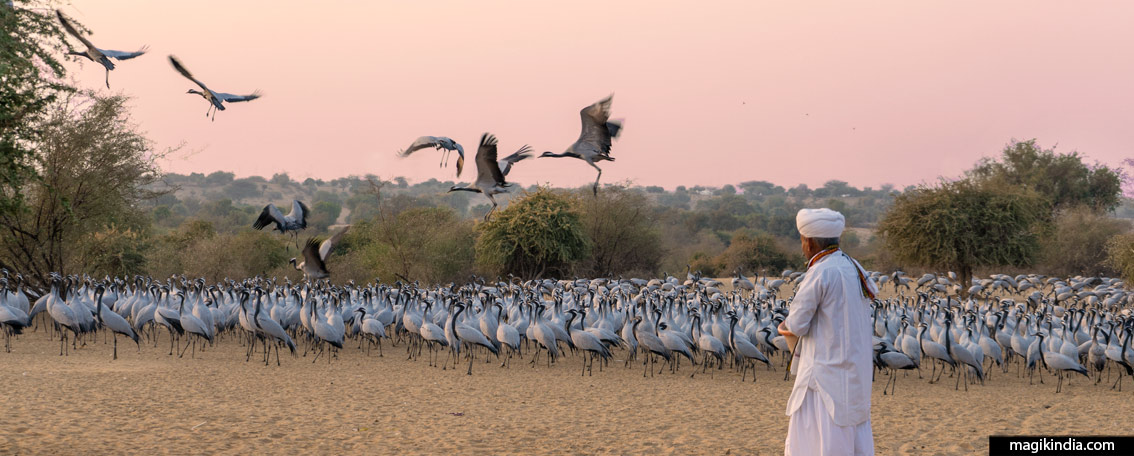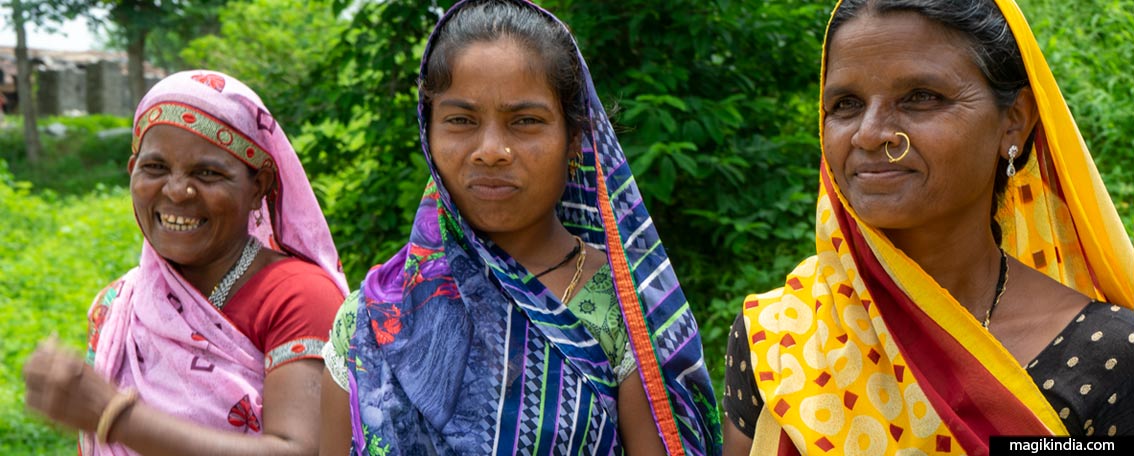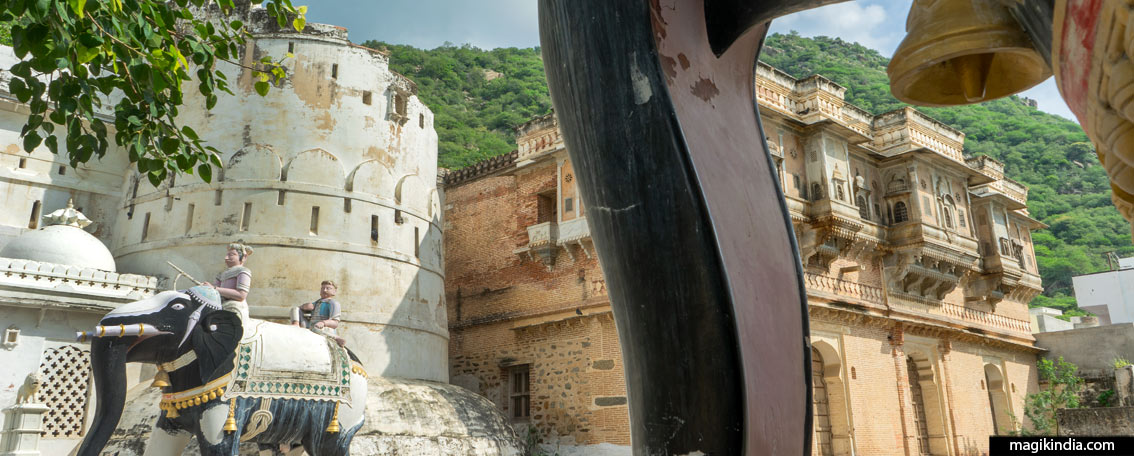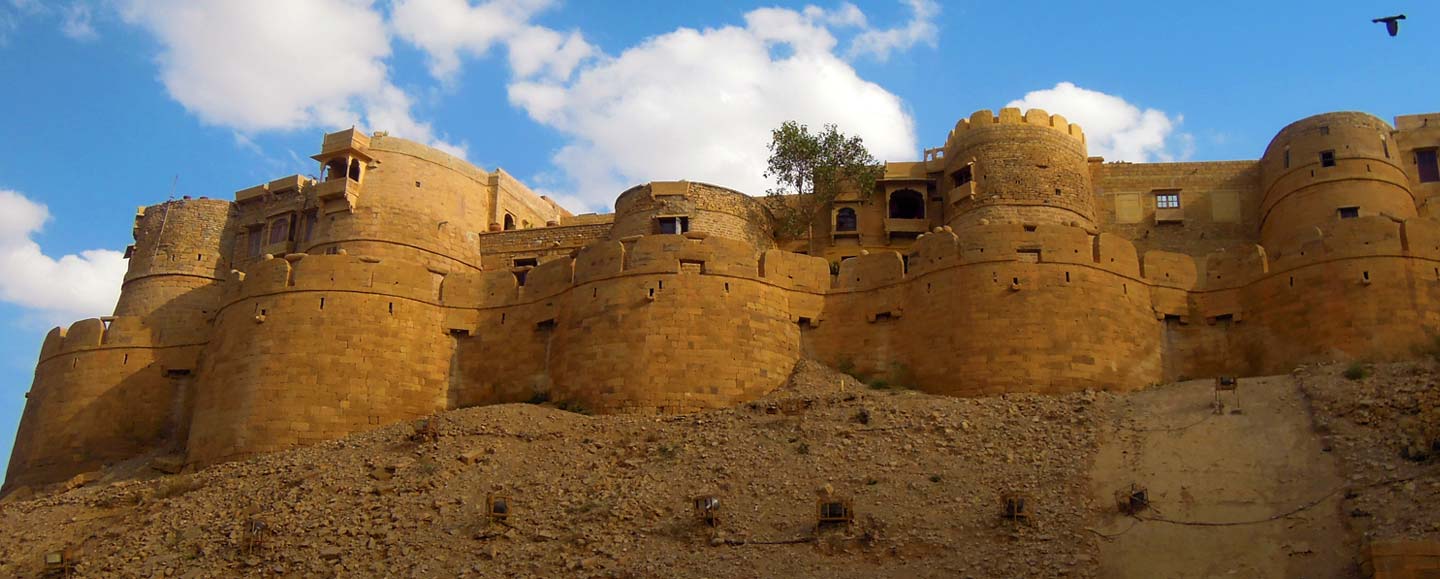
Sas-Bahu, the medieval wonders of Udaipur
Located in Nagda, just 20 kilometers northeast of Udaipur (Rajasthan), the Sas-Bahu temple complex is a true architectural gem that never fails to amaze me. Each visit is a new opportunity to contemplate and rediscover these remarkable buildings. These temples are an eloquent testament to medieval Indian architecture and sculpture, reflecting the distinctive architectural style of the Solanki dynasty (also known as Chaulukya), which flourished in the region.
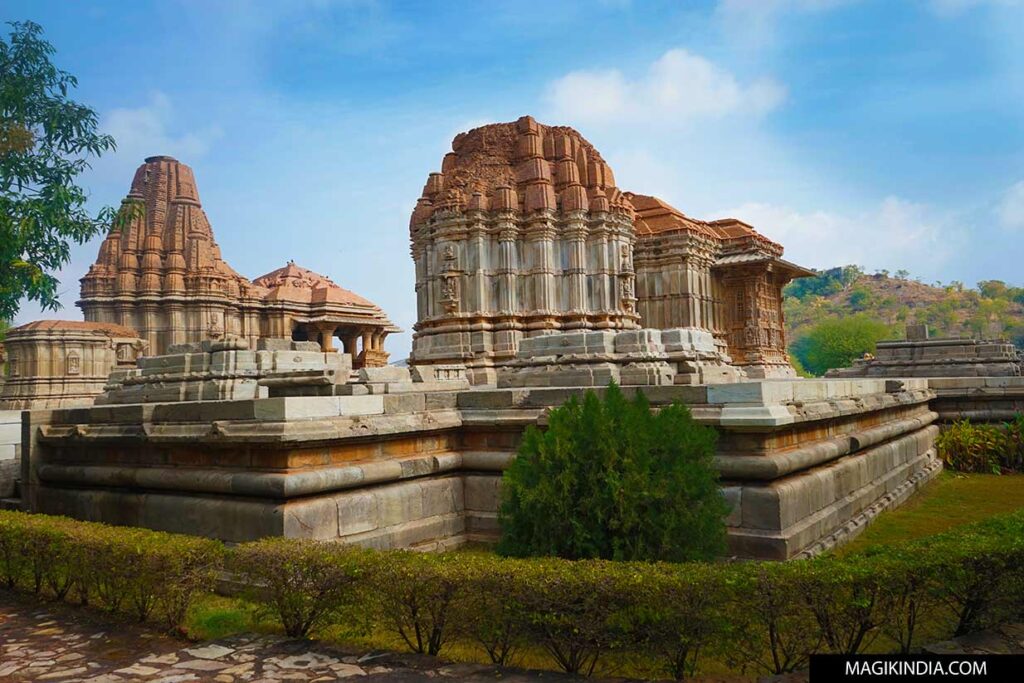
Behind the intriguing name “Sas-Bahu” (meaning mother-in-law and daughter-in-law) lies a popular legend. It is said that the queen, the mother-in-law, was a devout devotee of Lord Vishnu, and it was for her that the grand temple of Sahastra Bahu (Vishnu) was built. Later, her daughter-in-law, who was a worshipper of Lord Shiva, requested the construction of a temple for her favorite deity, hence the smaller temple dedicated to Shiva nearby. This story, whether factual or apocryphal, has given a unique and memorable name to this complex.
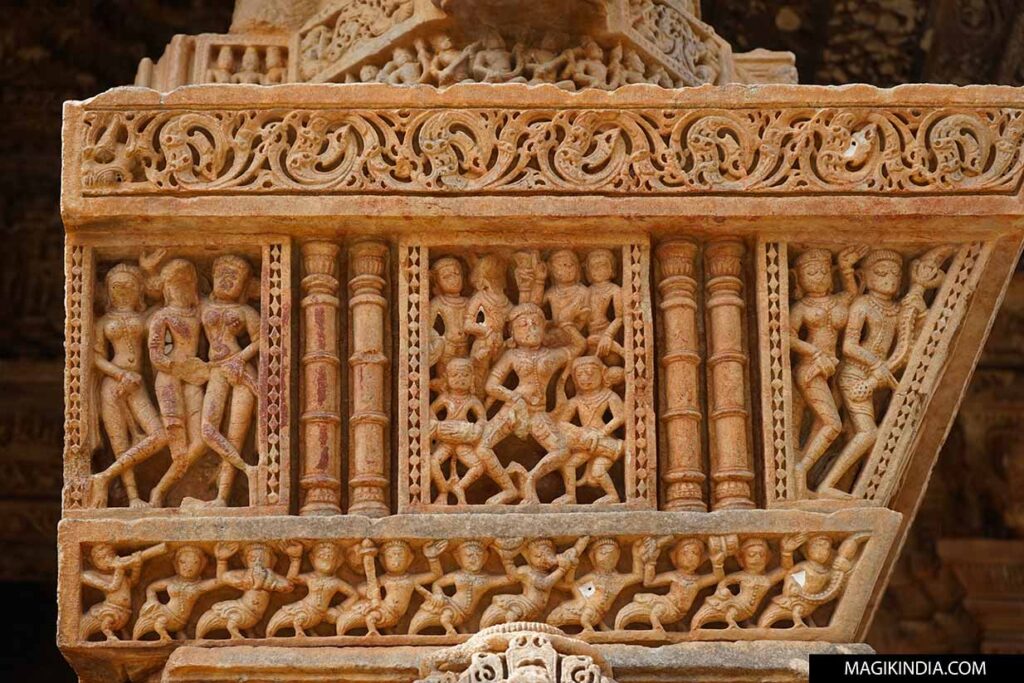
Most likely built during the reign of King Mahipala of the Kachchhwaha dynasty, the Sas-Bahu temples date mainly from the 10th and 11th centuries CE. At their peak, they were religious and artistic centers of paramount importance. Despite the ravages of time and successive invasions, many structures and sculptures are exceptionally preserved.
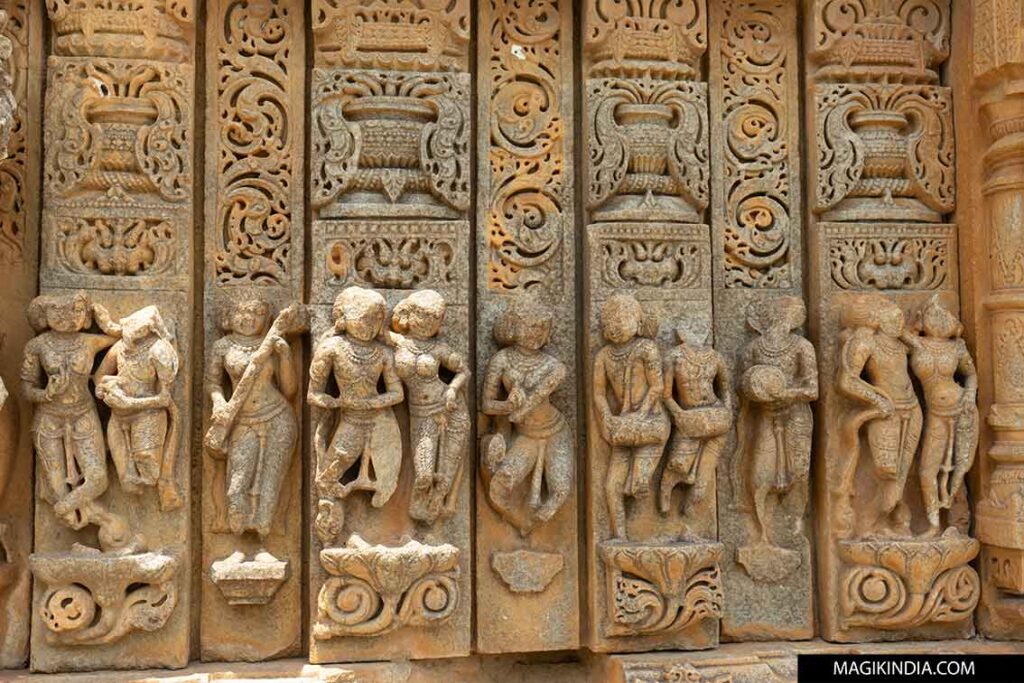
These temples are iconic examples of the Maru-Gurjara style of architecture, which originated in Rajasthan around the 6th century CE and reached its peak under the Solanki rulers of Gujarat (10th to 13th centuries CE). They are responsible for masterpieces such as the magnificent Sun Temple at Modhera. The name “Maru-Gurjara” itself is a tribute to the ancient names for Rajasthan (Marudesh) and Gujarat (Gurjaratra).

This style is distinguished by a profusion of sculptures, leaving no surface empty. This intense sculptural decoration reveals a close connection between Maru-Gurjara architecture and that of the fabulous Hoysala temples of Karnataka. There are also many striking similarities with the famous temples of Khajuraho, highlighting the artistic influences and exchanges of the period.

Set high on a platform, the Sas-Bahu temple complex consists of two separate main temples: the larger one, often called the Sas (mother-in-law) temple, and the smaller one, the Bahu (daughter-in-law) temple. The Sas temple is surrounded by a group of ten smaller sub-shrines. The Bahu temple is accompanied by five sub-shrines.
Sas Temple
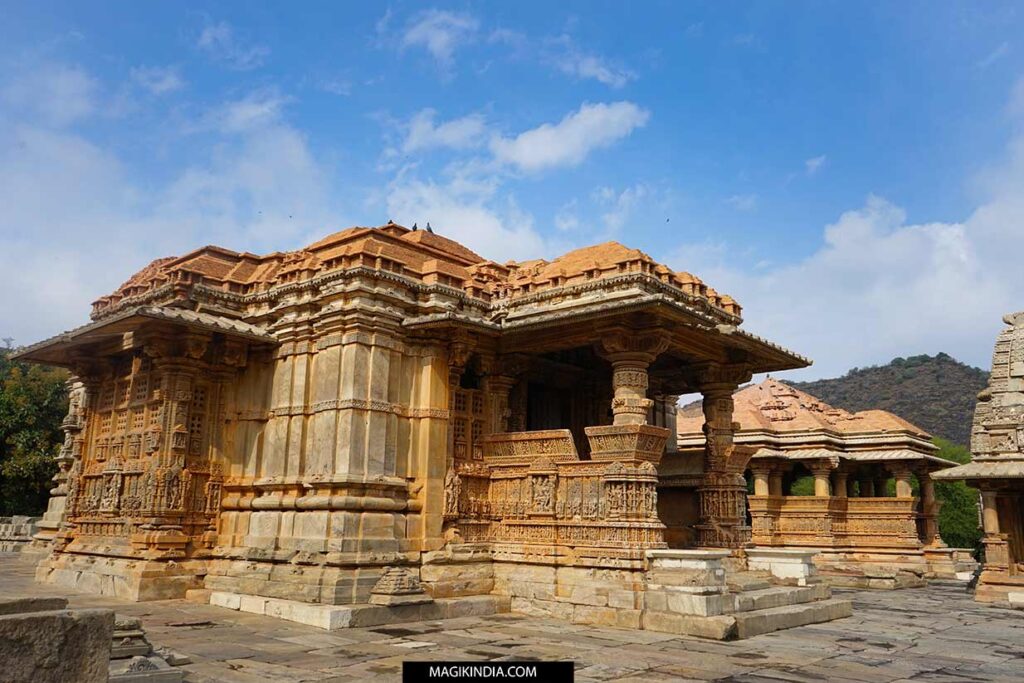
The great temple known as the Mother-in-Law (Sas) is dedicated to Lord Vishnu, and more precisely to his “thousand-armed” form (Sahastra Bahu), hence the original name of the temples.

The temple is of classical Nagara architecture from North India, consisting of an “ardha-mandapa” (entrance porch), leading to a “gudha-mandapa” (enclosed prayer hall). An “antarala” (vestibule) provides the transition to the “garbhagriha” (inner sanctuary), the sacred heart of the building, but which here does not have a statue.
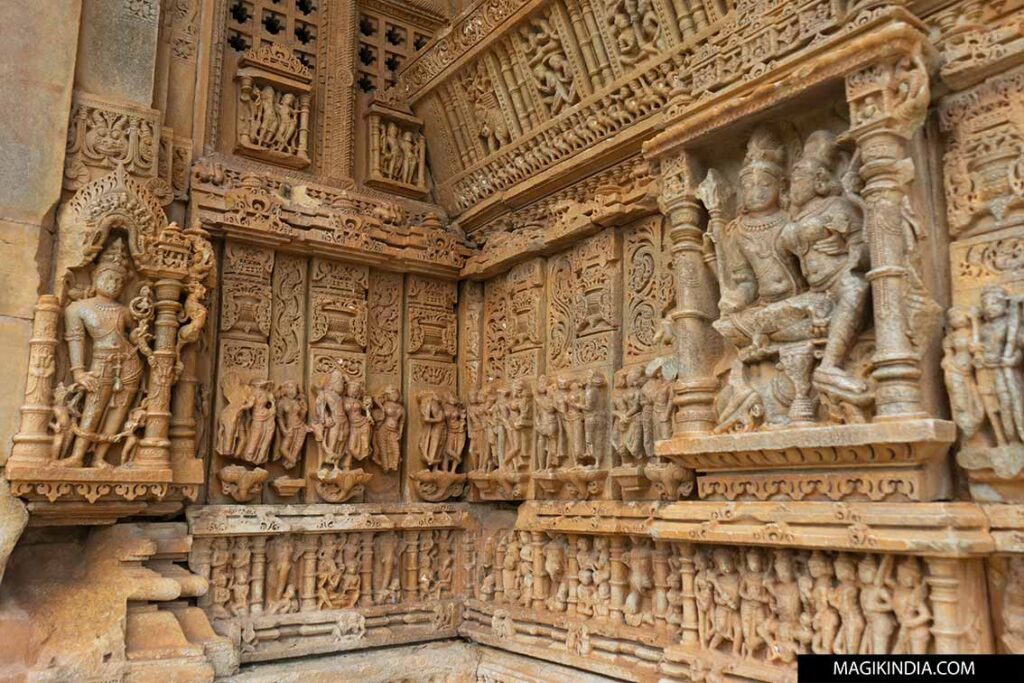
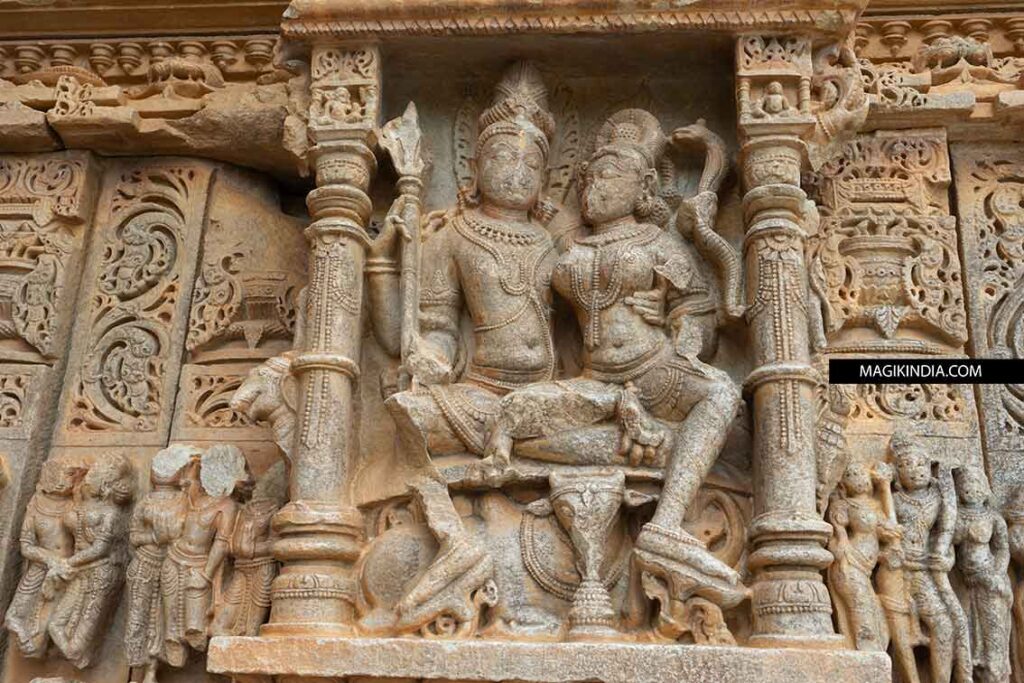
The sanctuary, in fact, is built on a “pancharatha” plan: its brick tower (or shikhara), although partially damaged, has on each of its four faces, five rathas, that is to say vertical projections which structure and adorn the building.

At the cardinal angles, the temple is adorned with representations of Brahma, Shiva and Vishnu. They are surmounted by the figures of Ram, Balarama and Parsurama, thus completing this divine composition.
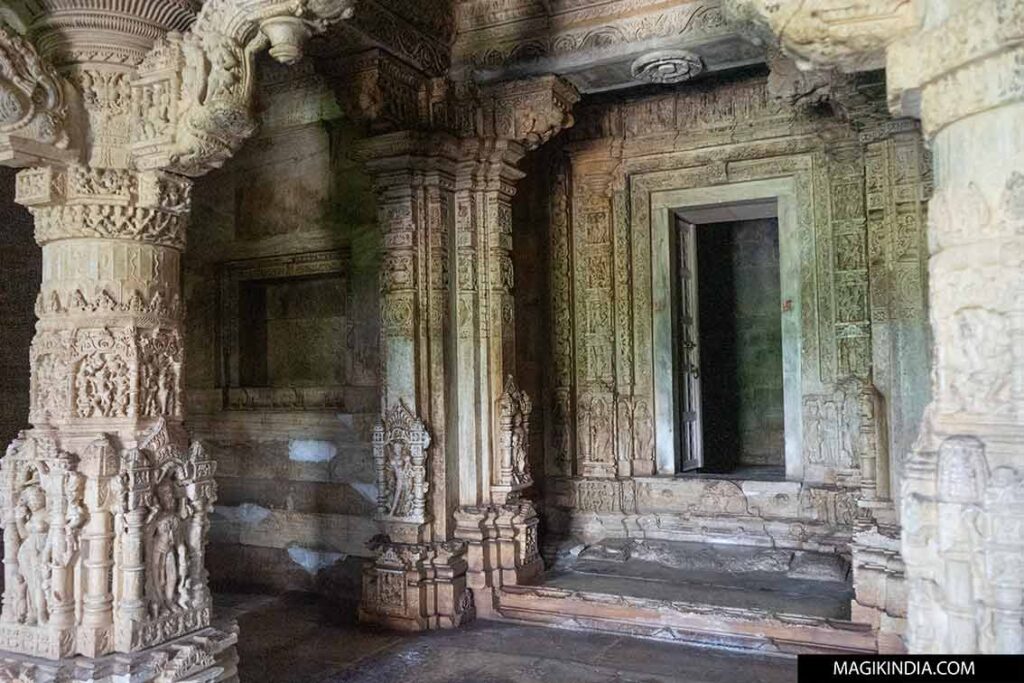
The three entrances to the various rooms are masterpieces of stone carving, with lintels and doorposts carved with deities, mythological scenes, and floral motifs.
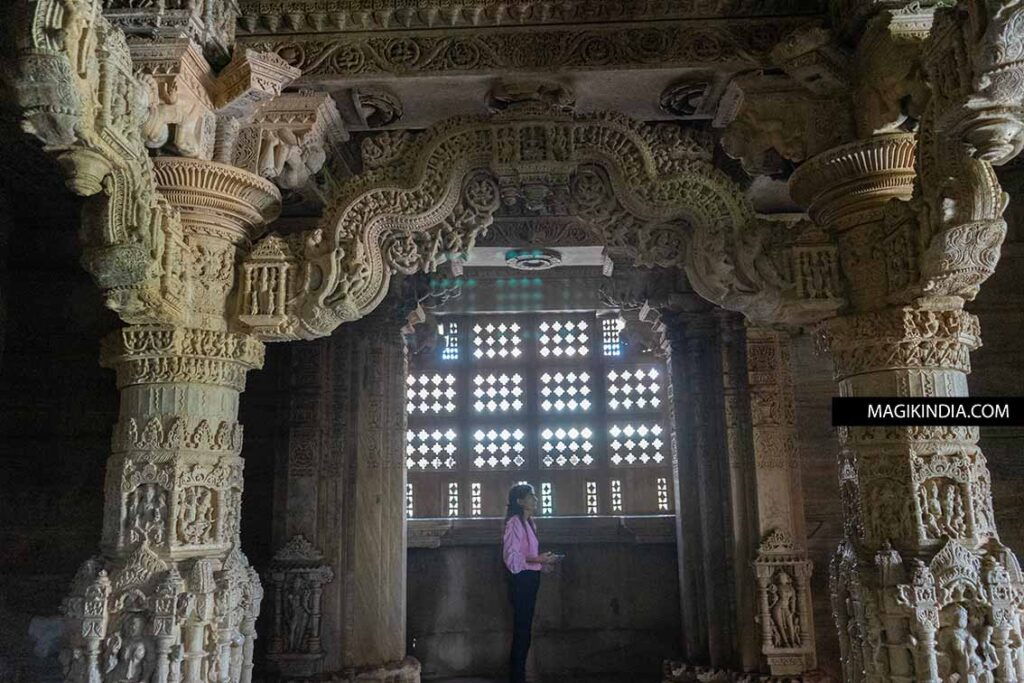
The Gudha mandapa is supported by torana-style arches. The fine workmanship and richness of detail leave you speechless.
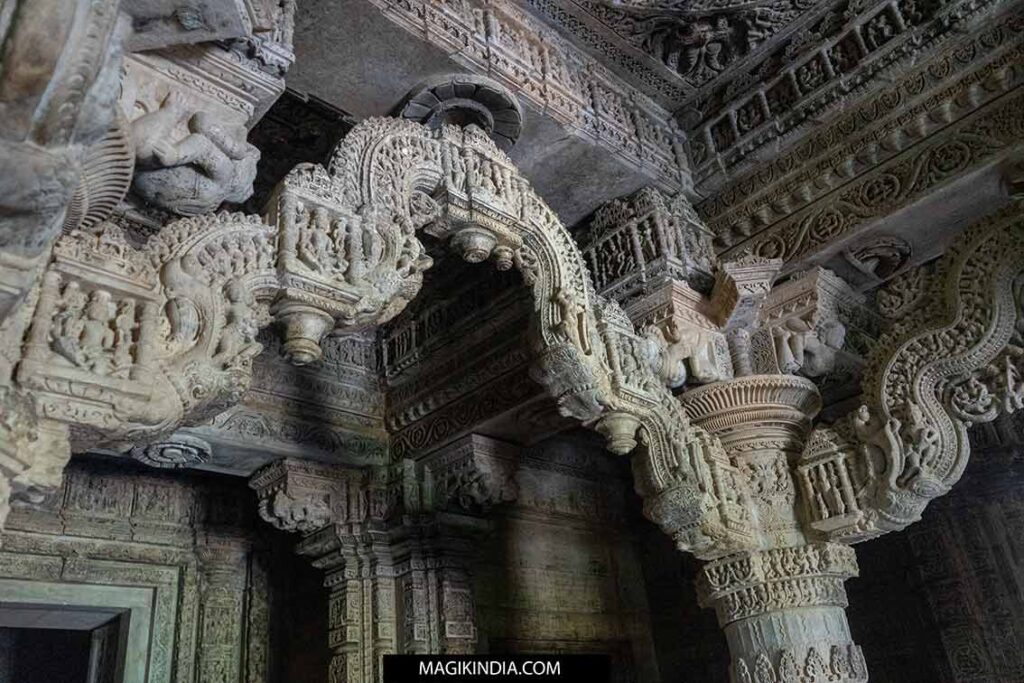
The mandapa is enclosed on either side by richly crafted jalis, allowing a subdued light to pass through. These lattices are adorned with divine reliefs, including graceful figures of apsaras (celestial nymphs), detailed friezes, and epic scenes from the Ramayana.

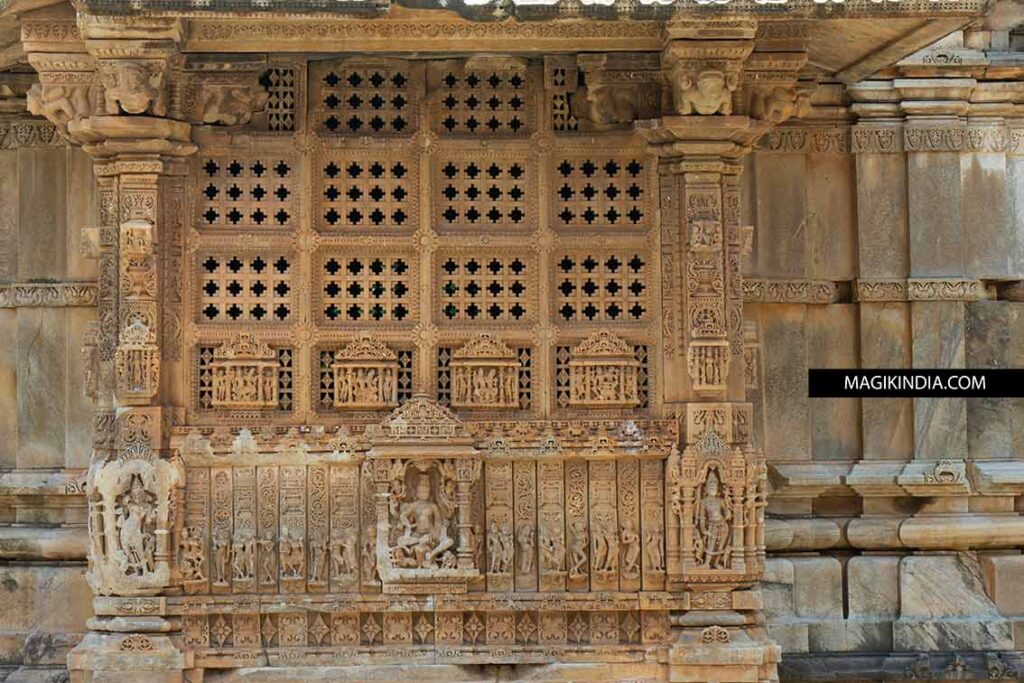
Amidst this sculptural profusion, we also discover, as is often the case in ancient temples, figures of embracing lovers and more suggestive representations inspired by the Kamasutra. To understand the presence of these erotic figures in spiritual places, I invite you to consult my article on Khajuraho.
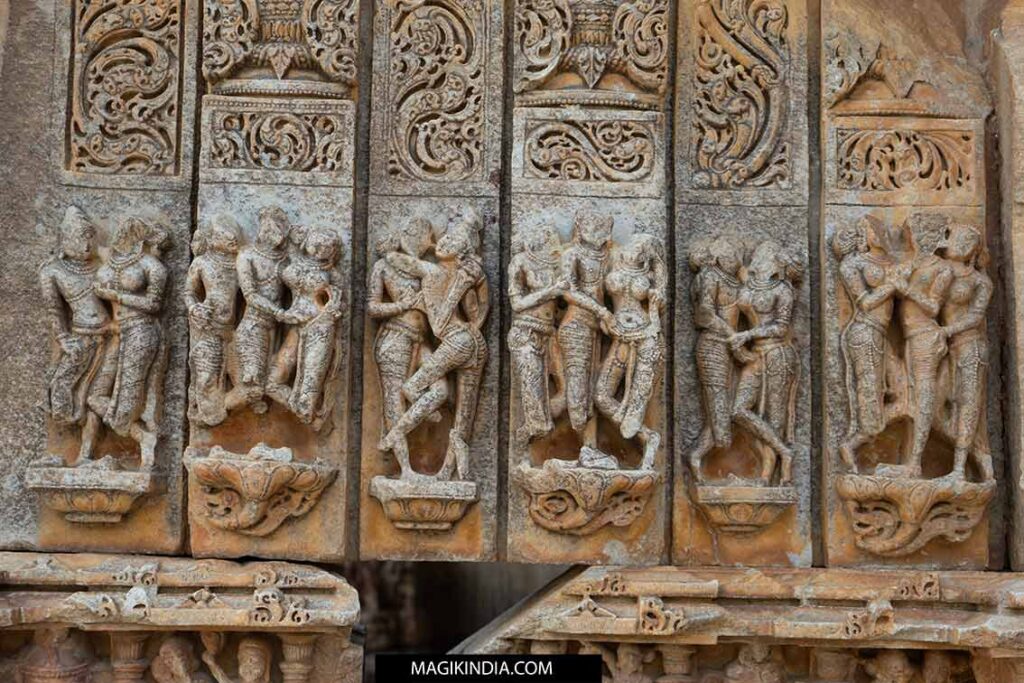
Between the two temples stands a makara-torana, an ornate arch that once served as a separate entrance to the twin temples. With the view of the adjacent lake in the background, this arch adds a striking beauty to the place.
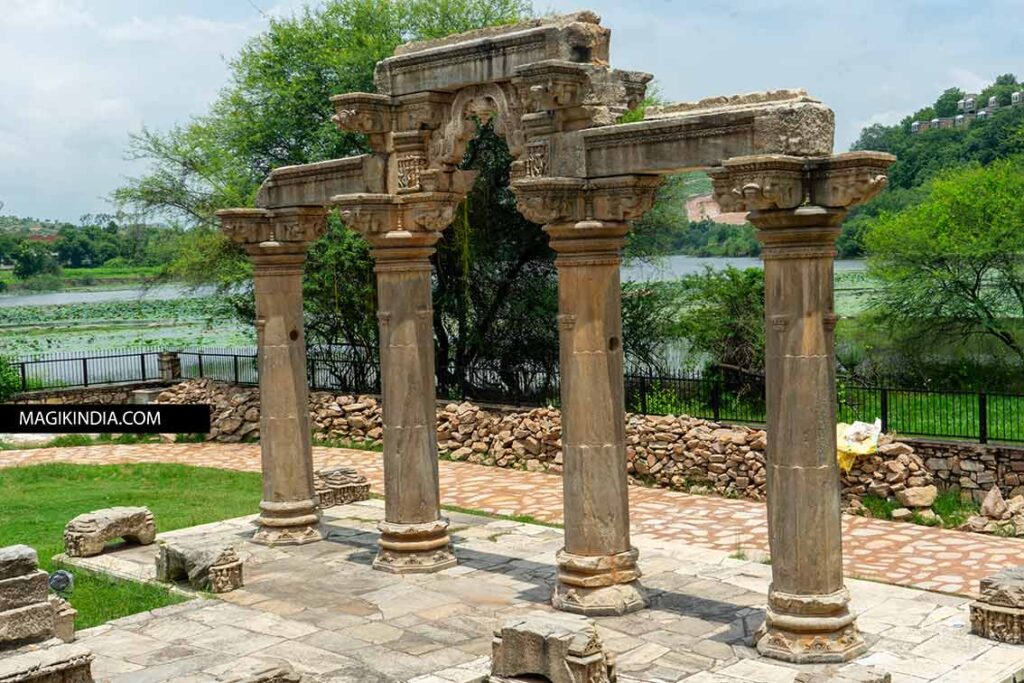

Bahu Temple

The small temple of the daughter-in-law (Bahu) placed parallel to the large one is dedicated to Lord Shiva. Although more modest, it is no less impressive in its details. It shares architectural similarities with the large temple, but on a more intimate scale.
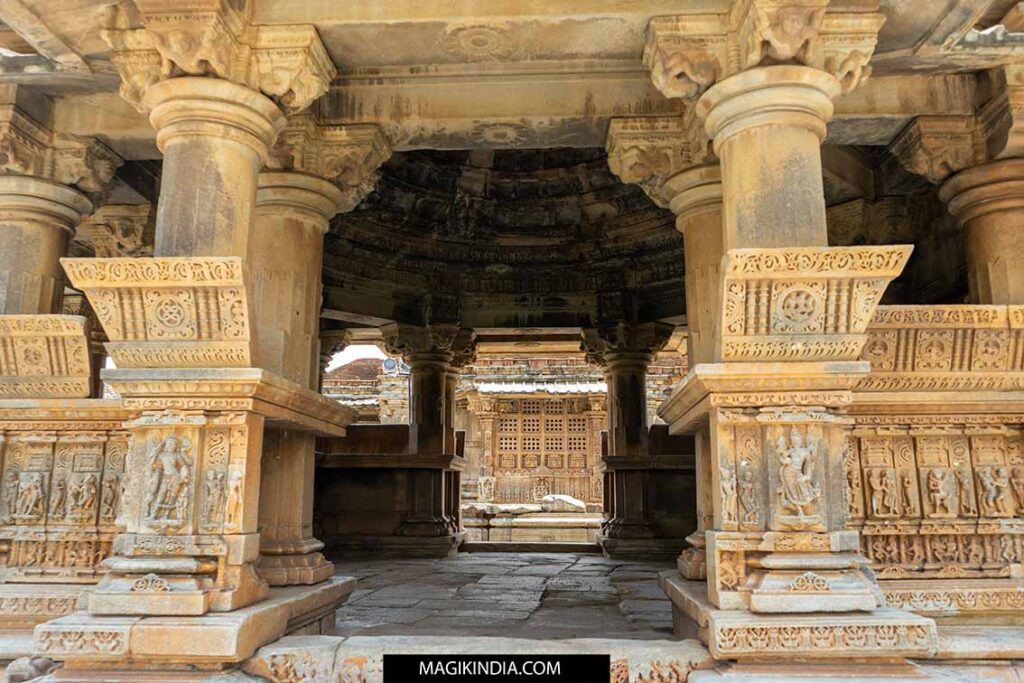
The temple’s mandapa has an octagonal ceiling and its side porches are open, distinguishing it from the large main temple, which is enclosed by jalis. Decorative balustrades add a finishing touch to this structure.

Here too, the temple is adorned with rich divine iconography, featuring a multitude of Hindu deities such as Vishnu in his various incarnations, Brahma, Shiva and several goddesses. There is also a profusion of graceful figures of apsaras, musicians and dancers, all depicted with great elegance.

Things to see near Sas-Bahu temples
While visiting the Sahasra Bahu temples, be sure to check out two other important sites nearby that will enrich your exploration of Rajasthan’s history and culture: Eklingji Temple and Delwara Village.
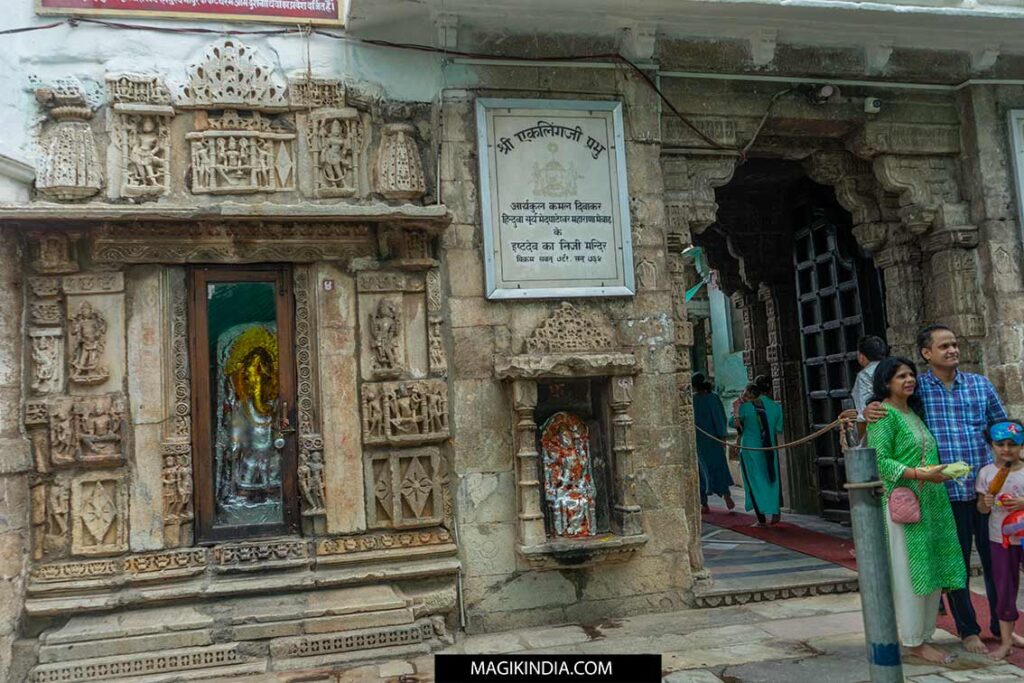
Eklingji Temple, just 1.5 km from the Sahasra Bahu Temples, is a major Hindu site dedicated to Lord Shiva. This ancient shrine (parts dating back to the 8th century CE) is of great religious importance, being the main temple of the tutelary deity of the royal family of Mewar. The shrine has specific timings for “darshan” (visit and prayer): generally from 4:30 to 7:00 a.m., from 10:30 a.m. to 1:30 p.m., and from 5:00 to 7:30 p.m. It is advisable to dress modestly.
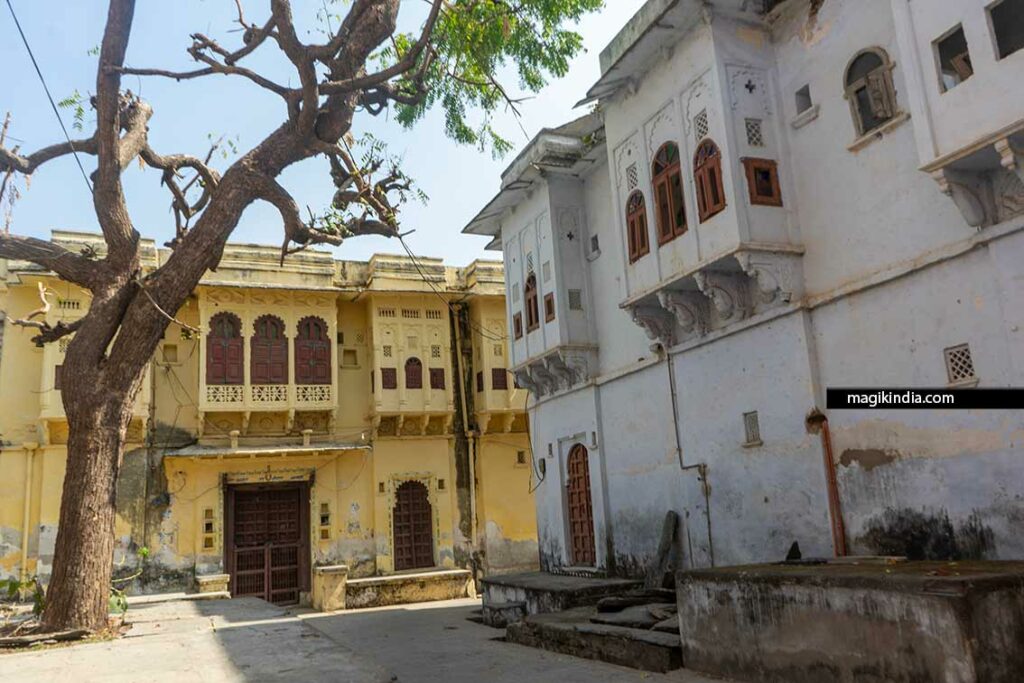
Located 7 km north of Eklingji, Delwara is a picturesque village nestled in the Aravalli Hills. Once known as the “City of Gods” due to its abundance of temples, Delwara now offers an authentic immersion into rural Rajasthani life. We organize themed tours focused on exploring this authentic village. Contact me !
KNOW MORE ABOUT DELWARA
